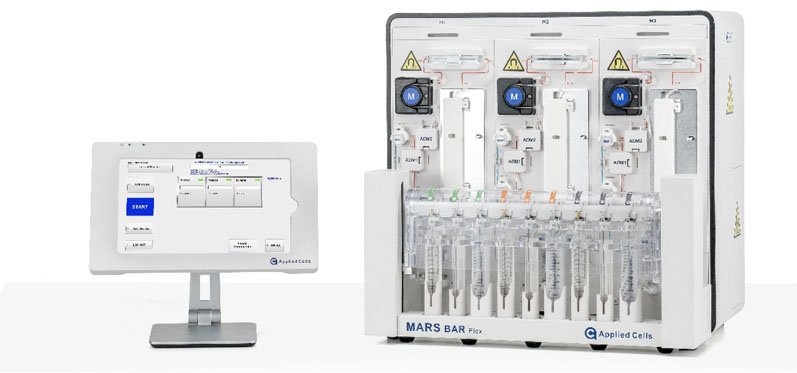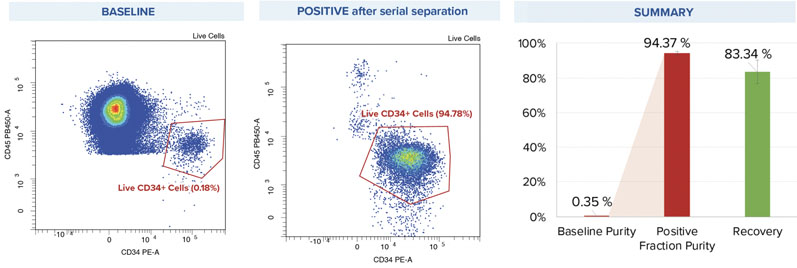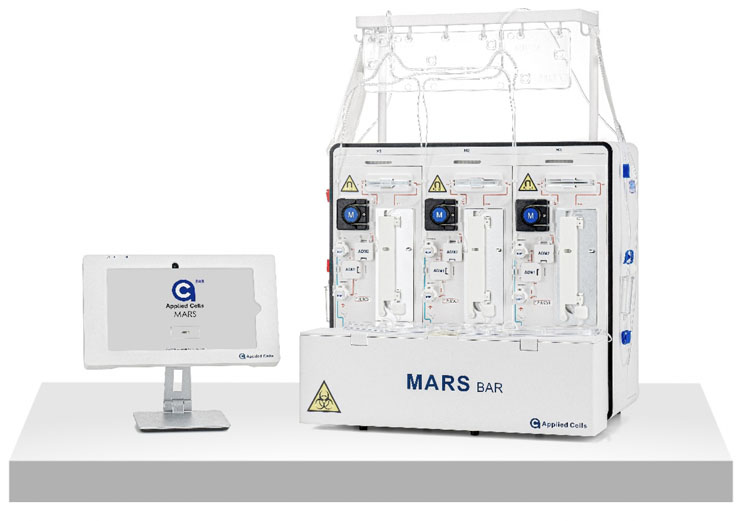Production involves the use of CD34+ cells with the potential to develop into different cell types within the body. Examples include embryonic stem cells, induced pluripotent stem cells and adult stem cells, all of which have unique therapeutic potential.
The use of stem cells in therapy is still a relatively new field and intensive research is being done to fully understand the possible benefits and risks.
Despite this growing interest, the development of novel therapies is still hampered by time-consuming sample preparation and the considerable loss of viable cells during separation and isolation; this makes it difficult to quickly obtain sufficient material for downstream processes.
These limitations also hinder the rate at which new stem cell-based therapies can be brought to market and made widely available to those that would most benefit from these state-of-the-art treatments.
Bridging the interdisciplinary gap
Applied Cells Inc. was founded to address these challenges by creating a novel technology that would complement the industry’s existing cell separation and enrichment portfolio and, ultimately, increase stem cell separation efficiency through the incorporation of physics principles.
Founder Dr Yuchen Zhou saw the potential of this original approach and decided to combine his team’s extensive knowledge of physics, chemistry, biology and engineering to develop the revolutionary MARS® technology.
This groundbreaking research tool uses an innovative in-flow method to separate cells based on immunomagnetic labelling, eliminating the need for dedicated separation columns.
This novel and simplified separation workflow simplifies and streamlines the cell isolation process. It also avoids the need for centrifugation and red blood cell (RBC) lysis, while offering minimal sample loss, high recovery rates and high purity results.
The MARS Bar Flex platform based on this technology (Figure 1) performs matrix-free immunomagnetic cell selection.1
The device features a range of programming options, allowing users to set up a customised, automated workflow for magnetic separation, and enables multiple samples to be processed in parallel for greater efficiency.
It also provides users with the flexibility to run individual modules to optimise the assay — and both positive and negative fractions can be collected in separate tubes or bags, minimising wastage and cell loss.
Isolated cells are immediately ready for single-cell phenotypic and genomic analysis, or for expansion, with no need for additional processing.

Figure 1: The MARS Bar Flex platform helps to address the common challenges of slow separation and cell loss associated with the development of novel stem cell therapies
A giant leap forward in stem cell research
The absence of magnetic columns means that cells will not be trapped during isolation, avoiding cell loss. This enables the MARS Bar Flex to isolate CD34+ cells from peripheral blood, cord blood and mononuclear cell samples from smaller input sample volumes with high recovery, purity and reproducibility (Figure 2).
This reduces the overall amount of donor blood required to obtain a viable sample, supporting more cost-effective stem cell therapy development.

Figure 2: MARS technology optimises hematopoietic stem cell (HSC) isolation, achieving HSC CD34+ enrichment from baseline purity (0.35%) to >94% final purity with recovery greater than 83%
The other platform in this product range, the MARS Bar, is a closed sterile fluidics system (Figure 3), which further shortens and standardises cell separation workflows for rapid study scale-up — all the way from process development research to commercial cell manufacturing.
The dramatic cumulative time savings brought by both instruments could help novel stem cell therapies to come to market sooner, allowing patients to receive potentially life-saving treatment earlier.

Figure 3: The MARS Bar closed sterile fluidics system, together with compatible GMP immunomagnetic reagents, supports the cell isolation workflows necessary for downstream cell therapy and cell production processes
Applied Cells’ cross-boundary attitude to solving real-world healthcare problems has been central to the development of this trailblazing platform, and holds much promise to accelerate vital research in this exciting area of therapeutics.
The company itself may also serve as a blueprint for other industry disruptors to follow in the years to come, fuelling further technological developments in stem cell research in the future.
Reference
- https://appliedcells.com/mars-instruments/mars-bar/.
